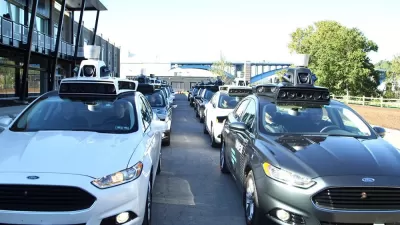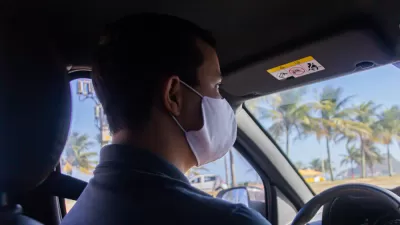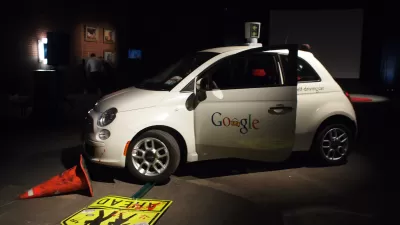In the wake of a high-profile (and fatal) accident involving an autonomous Uber car, the safety debate is trending. But the broader economic picture still points to a future of shared driverless rides.

After an Uber self-driving prototype struck and killed a pedestrian in Arizona, the company has suspended test operations in other cities. But according to this piece from the Economist, self-drivers will likely hit the streets as fleets of "robotaxis" in the Uber vein, not as privately-owned vehicles. That is, if the technology can be made safe enough.
"Although today's experimental vehicles are modified versions of ordinary cars, with steering wheels that eerily turn by themselves, future AVs will have no steering wheel or pedals and will come in all sorts of shapes and sizes; pods capable of carrying six or eight people may prove to be the most efficient design."
The economic argument here is that robotaxis can earn for most of the day, while private vehicles sit idle most of the time. "The initial deployment of self-driving vehicles as robotaxis makes sense because they only need to work within a particular area—and because the sensors needed for a fully autonomous AV to sense its surroundings and figure out how to respond currently cost more than the vehicle itself."
The piece conjectures that in several decades, robotaxis will account for the majority of urban miles travelled. That'll open up plenty of land currently used for parking. "Eventually, perhaps by 2030 or so, the cost of sensors will fall and it will no longer be prohibitively expensive to buy your own self-driving vehicle. The question then is whether you would want to."
FULL STORY: Why driverless cars will mostly be shared, not owned

Alabama: Trump Terminates Settlements for Black Communities Harmed By Raw Sewage
Trump deemed the landmark civil rights agreement “illegal DEI and environmental justice policy.”

Study: Maui’s Plan to Convert Vacation Rentals to Long-Term Housing Could Cause Nearly $1 Billion Economic Loss
The plan would reduce visitor accommodation by 25% resulting in 1,900 jobs lost.

Planetizen Federal Action Tracker
A weekly monitor of how Trump’s orders and actions are impacting planners and planning in America.

Waymo Gets Permission to Map SF’s Market Street
If allowed to operate on the traffic-restricted street, Waymo’s autonomous taxis would have a leg up over ride-hailing competitors — and counter the city’s efforts to grow bike and pedestrian on the thoroughfare.

Parklet Symposium Highlights the Success of Shared Spaces
Parklets got a boost during the Covid-19 pandemic, when the concept was translated to outdoor dining programs that offered restaurants a lifeline during the shutdown.

Federal Homelessness Agency Places Entire Staff on Leave
The U.S. Interagency Council on Homelessness is the only federal agency dedicated to preventing and ending homelessness.
Urban Design for Planners 1: Software Tools
This six-course series explores essential urban design concepts using open source software and equips planners with the tools they need to participate fully in the urban design process.
Planning for Universal Design
Learn the tools for implementing Universal Design in planning regulations.
Caltrans
Smith Gee Studio
Institute for Housing and Urban Development Studies (IHS)
City of Grandview
Harvard GSD Executive Education
Toledo-Lucas County Plan Commissions
Salt Lake City
NYU Wagner Graduate School of Public Service





























